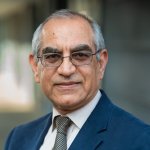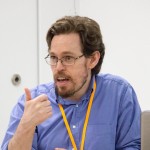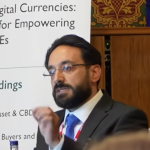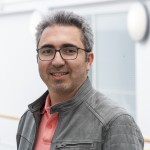
People
We are leading experts in our fields and have a wide range of specialised interests in business analytics, operations, supply chain management and logistics, extractive industries and sustainability. We invite contact from prospective postgraduate research students.
Head of Business Analytics and Operations

Dr Abhijit Sengupta
Associate Professor (Reader) in Business Analytics, Discipline of Management, Surrey Business School
Academic staff

Dr Rosie Cole
Senior Lecturer in Sustainable Supply Chain Management

Dr Karen Dennis
Senior Lecturer in Operations Management

Professor Ali Emrouznejad
Professor and Chair in Business Analytics, Director of the "Centre for Business Analytics in Practice", and Program Lead for "Sustainability Analytics, Metrics, and NetZero"

Dr Masoud Fakhimi
Senior Lecturer in Operational Research

Dr Wolfgang Garn
Associate Professor in Analytics

Dr Dimitris Giraleas
Senior Lecturer In Business Analytics

Dr Vikas Grover
Senior Lecturer in Management Information Systems

Dr Andrew Hill
Senior Lecturer in Business Analytics

Dr Athina Ioannou
Senior Lecturer in Business Analytics

Dr Vahid Mirza Beiki
Senior Lecturer in Operations Management

Dr Abdolreza Roshani
UG Program Director for BSc in Business Analytics; Lecturer (Assistant Professor) in Business Analytics

Dr Abhijit Sengupta
Associate Professor (Reader) in Business Analytics, Discipline of Management, Surrey Business School

Dr Tammi Sinha
Director of Undergraduate Studies SBS, Senior Lecturer Operations Management

Deji Sotunde
EMBA Programme Director, Senior Lecturer

Dr Mahdi Tavalaei
Senior Lecturer in Strategy and Digital Transformation | MBA Programme Director

Dr Mehdi Toloo
Reader in Business Analytics

Dr Christopher Turner
Senior Lecturer in Business Analytics

Professor Yu Xiong
Fellow of Academy of Social Science; Chair Professor of Business Analytics; Director, Surrey Academy for Blockchain and Metaverse Applications

Dr Xun Zhou
Senior Lecturer in Business Analytics
Emeritus staff

Professor James Aitken
Emeritus Professor
Visiting staff
| Name | Role |
|---|---|
| Nick Ryman-Tubb | Visiting Professor |
| Paul Krause | Visiting Professor |
| Patrick Mikalef | Visiting Professor |
| Lydia Karl Afua Osei | Visiting Researcher |
Postgraduate research students
| Name | Role |
|---|---|
| Ali Ahmadi | Postgraduate Research Student |
| Abdulaziz Sihli F Alshammari | Postgraduate Research Student |
| Elnaz Azdi | Postgraduate Research Student |
| Lin Fu | Postgraduate Research Student |
| Oshiorenua Imokhai | Postgraduate Research Student |
| Chixiao Lu | Postgraduate Research Student |
| Eyup Kar | Postgraduate Research Student |
| Eleanor Mill | Postgraduate Research Student |
| Sheeba Pathak | Postgraduate Research Student |
| Melanie Rich | Postgraduate Research Student |
| Divya Modi Tongya | Postgraduate Research Student |
| Lambros Viennas | Postgraduate Research Student |
| Ruoxi Yang | Postgraduate Research Student |
| Qingyu Zhang | Postgraduate Research Student |
| Ying Zhang | Postgraduate Research Student |
| Jing Zhao | Postgraduate Research Student |
